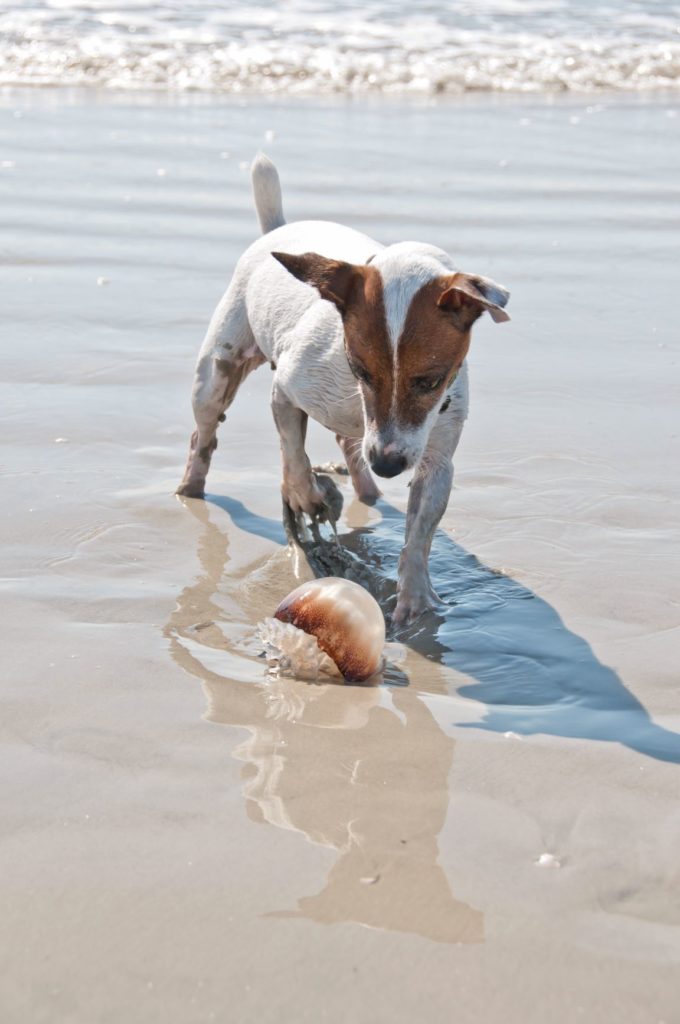
It’s summer time and the beach is calling. If you’re planning on taking your dog seaside, be sure to keep a close eye for any potential risks that could spoil a great day out by keeping your dog safe at the beach.
Things to look out for include jellyfish, snakes, ticks, things that can be swallowed and signs of heat stroke. PETstock vet Dr Hay Chung offers these beach safety tips:
- Be prepared: Take plenty of water, a bowl, towels, sunscreen (for you and your buddy – particularly important for dogs with exposed skin, pink noses or short hair), and poo bags to keep your dog safe at the beach.
- Keep an eye on your buddy: Make sure they are always within eyesight (and earshot) so you can catch them before they touch something they shouldn’t.
- Jellyfish stings can cause local pain and swelling, but poisonous jellyfish stings can cause swelling of the head and face, wobbliness, hives, drooling and anaphylactic reactions. If you notice these signs, take your dog to a vet immediately.
- Always be on the lookout for snakes. An inquisitive dog may get bitten, so keep an eye on your pet and monitor them for signs of a snake bite – lethargy, wobbliness, drooling and vomiting.
- The paralysis tick is found along the eastern coast from Cooktown in Queensland to Lakes Entrance in Victoria. As the name suggests, this tick causes paralysis starting from the hind legs, then spreading to the front legs. If you’re travelling to these coastal areas in spring/summer, it is recommended that you use appropriate tick protection.
- Many dogs are inclined to chew or swallow things like bait or fish hooks, because they smell fishy. In some cases, this can cause diarrhoea and vomiting. In more severe cases, the object may need to be surgically removed.
- Heat stroke is another risk, particularly with energetic dogs. Heat stroke happens when the dog’s body temperature gets too high. This is caused by a combination of hot weather, high-energy activities, and sometimes dehydration. To reduce the risk of heat stroke, avoid visiting the beach in the hottest part of the day in summer – mornings or late afternoons are best.
- Monitor them back home: Be aware of any odd behaviour, your pet could be dehydrated or feeling unwell. Contact your closest vet immediately if you’re concerned.








